-
Posts
91 -
Joined
-
Last visited
-
Days Won
2
Content Type
Profiles
Forums
Blogs
Gallery
Events
Store
Posts posted by farmer
-
-
-
dear farmer
see here the mesures of my medal
Ø medal 38,34 mm
hight from ball at top 46,23 mm
Ø center front 13,17 mm
Ø center back 13,28 mm
middel size 7,18 mm
large ribbon 37,38 mm
large black stripe in ribon 6,18 mm
Guy
Guy,
Thanks for the images and measurements.
Obviously you have a digital caliper. There are some interesting points apparent here. Your suspension part on the EIC (for those who are not familiar with this terminology - Independent State of Congo) type is not as finely detailed as mine, yet dimensions are very close to all of my examples. Also, all of mine lack this round spot (featured in the center of suspension) as shown in your images. Center disk appears nearly identical to yours, so do the other features except suspension details.
My manual caliper shows (note that I am estimating decimals here):
Measurements of 5 individual crosses (unless specified below).
- overall height (bottom of cross to top of suspension ball) - 44.2 - 45.8
- width at widest spread of the arms of the cross - 35.3 - 35.5
- diameter (measured at furthest distance of 'bulge' between arms: 38.3- 38.9 (this is one troublesome masurement since 'bulges' are not symmetrical)
- Suspension ring diameter: 14.2mm - 14.8mm (2 of mine are quite deformed so this measurement is of 3 medals)
- wire thickness of rings - about 1.5 mm this makes it roughly 14 gauge (in North America)
- center disk diameter; obverse - 13mm - 13.1mm; reverse: 12.9-13.2mm.
- ribbon width of 4 - (4 are presumed original - 1 replacement with later ribbon): 37-37.2mm (I think it would be safe to state those were to be 37mm intended width)
- black stripe width - 6mm (again, I think that would be the safe guess as to intended size)
One other thing I have noticed, 2 of my 'gold' crosses appear to be made of silver gilt and have a strange punch mark on the ribbon eye - unknown to me but it is very partial hence hard to decipher.
All of my medals show fine machining in the center part - rings are visible in the image of a gold and silver class medals.
0 -
-
-
-
Gents,
This is indeed a known problem since vast majority of recently sold items are copies or even downright forgeries. Easily obtained silver/gilt crosses and medals are fitted with copied center disks. I have seen pretty much every class done that way and sold on the net or at shows. In my years of observation, original Gold/Silver crosses had the older (Wolfer's pre 'classic' type) crown.
Medals of Merit - I own 5 (3 gold class and 2 silver class) and Guy's original medal shown above is exactly the same as all mine.
To sum it up:
5 of mine, at least one belonging to Guy, 11 others from collectors I know - all of identical details.
This brings me to a notion that there was perhaps only one maker for those early merit medals.
Suspensions are all the same - see image below.
0 -
Unfortunately, I think the pin has been replaced (why??), but I see so few of these in PICS, I really can't tell as some appear to have this pin "head" showing as well. Thoughts??
Tim
Hey Tim,
Seems this one is French made - call me crazy but I think there is a French silver purity mark on the suspension? I think Delande made some of those in silver gilt.
0 -
Hi farmer,
don't wait, you only need a better program.
This is a picture with 82.9kb:
Uwe
Uwe and Tim,
Thanks for the replies. I would argue the quality and use of an app such in Uwe's post but this is not relevant here. I am perfectly happy with photoshop cs for my uses. What pains me is the 85/110 kb limit in the age of most servers going with almost unlimited web space (even free servers). Never the less, it simply takes considerably longer for me to shrink and downsize images in order to post them and I have no desire to purchase another camera just for the purpose of posting here.
Tim, your shots are really nice and well lit - older mavica's had surprisingly good lens and solid compression algorythm. My old canon failed few years ago otherwise I too would use it.
For your pleasure, image of my GC circa 1860 of - under 50 kb but it took me nearly 5 minutes to edit and save - call me impatient but it seems like a very long time for me. I just really hate the pixelization.
Cheers.
0 -
Hello
Thank you,
Yes, 25 years of collecting/researching L1 Order (with limited funds) but I do own some unusual examples.
Thank you for the offer to help with images (and yours are quite nice indeed) but it is the quality I'm concerned with. I shoot most of my stuff with a dedicated micro lens so file size is rather large. I am proficient with photoshop so cropping/downsizing them is not a problem but compressing to 85kb - I am rarely happy with outcome - especially when details are important. I'm not certain how long one has to wait until larger images are being allowed to post but I will just have to wait.
I am in the vast land of the 'maple leaf' - Belleville area so not really any coast, but there are times when I wish I was in the asylum.
Wishing all great Holidays!
0 -
Greetings. I have just purchased four old Spain Orders which were apparently awarded to a single French Officer of the "Etat Major de la Marine Française" during the French Second Empire while serving in Spain during the époque of the Spanish Queen Isabelle II (the Catholic). Even though I know the dealer somewhat, I would like to verify his information and obtain more, if possible, because I know very little of these type of Orders, which are far from my primary area of collecting French medals. They are beautiful, thus my interest in purchasing them.
The first is what I was told is the Spain Military Order of Saint Ferdinand Breast Star. I attached a low-resolution photo to this posting, but have a high-resolution on PhotoBucket at the following link:
http://s752.photobuc...20and%20Medals/
Look at medal #1
The information the seller provided me includes :
The Breast Star was instituted on 10 July 1815, by King Ferdinand VII after the defeat of Napoleon I. It was awarded to Officers and soldiers for exceptional military service within the army and navy. This Order was also bestowed upon French Expeditionary Corps Officers in 1823 in the battle for Trocadéro. The dealer claimed that this Breast Star is VERY RARE. It is Silver and enamel, measures about 56mm and weighs about 20 grams.
What I would like to know, if possible, are a number of things:
1. based on the photo, does it appear to be ORIGINAL?
2. does the information the seller provided by sound correct?
3. when was it discontinued?
4. who was eligible to receive it (military / civil), and for what purpose/deed?
5. assuming this is ORIGINAL, would it be considered RARE (how many were awarded – even an estimate would suffice)?
6. what would you estimate is the value of this Breast Star (just to give me an idea if I paid a correct price)?
Any and all information is welcome. Thank you in advance for your assistance.
Linas
Linas,
I may be late but saw there we no replies.
Star certainly looks original. St. Ferdinand was purely a Military award, this class would be definitely to officer. Smaller sized stars were common in the early years as these were easier to wear. I would date it as 1860's to 1890's. Value-wise - difficult but I see similar stars offered for around USD 700 and higher. Hope this helps.
0 -
Yes, I would agree this style is a product of Fisch.
Tim

Nice example Tim,
Getting hard to find with the original Silver palm.
0 -
QUOTE(oli4vercammen @ Nov 18 2006, 17:45 ) ←
How it is made, the details of the craftmanship, etc...
I would even say the military one is made by Heremans and the civilian is made by Wolfers

Hello,
I would think the Military one is Buls's (see the criss-crossed pattern in swor'd hilt and the uncrowned lion) - hence of much earlier vintage. I certainly do agree to Civil being Wolfers's.
0 -
Well, instead of just always asking questions, I am going to try to add something to this thread that may help some collectors differentiate the different crown suspensions and thus better date their Leopold I Orders. If I make mistakes or omit any styles, please add comments and additional examples.
During my recent transition into Belgian awards, some observations made as I browsed the different sites lead me to believe the following information applies to the attached collage of various Leopold I Orders.
See the PIC for reference:
A: Order of Leopold I, Military Division w-Espagnol Style Crown circa.1832. Maker: Unknown
B: Order of Leopold I, Civil Division w-Bombe' Style Crown circa.1839. Note how the crown widened at the center compared to the earlier Espagnol style. Maker: Unknown
C: Order of Leopold I, Civil Division w-Gonfle' Style Crown circa.1845. Maker: Unknown
D: Order of Leopold I, Civil Division w-Aplati Style Crown circa.1900. This is the style associated with WWI and WWII. Maker: Wolfers of Brussels
E: Order of Leopold I, Civil Division w-Aplati Style Crown circa.1951. Notice how the ends of the crown have been flattened or squared off. This piece has the bilingual center. Maker: Unknown
Additional Notes:
- The crown styles appear to have remained consistent throughout each period for both military and civil awards.
- The (D) and (E) type crowns are very similar and may in fact be the same style with the differences attributed simply to different manufactures as I have noticed both styles occasionally with the monolingual ?French only? and bilingual ?French/Dutch? centers.
- These particular crown examples were taken off of, or compared to, current and previous sale items at various dealer sites and is presented here for informational purposes only.
Tim

Tim,
My info-addition to L 1 crown styles.
Added to your list should be the second 'rounded wide' style crown in use from 1839-1845 (more-less) as manufactured by Buls (some categorize this as "1st Bulls style").
Your 'B' type is known to be used from 1835 (when Dutalis stopped and Allard was awarded the contract) until 1839 ( when Buls became the provider to the chancerry).
Also, there is another type between 'Gonfle' and the 'Classic' - I call this type 'widened-flat' as used between 1890 (circa) and WW1. This last type is limited to Wolfers, Heremans and perhaps Walravens. Another unique crown was made some time during last quarter of XIX c. by an unspecified French maker and is quite different.
Buls's second crown ('gonfle') was also used by Wolfers and Heremans (these two firms took dies from Buls when firm closed some time around 1885). To my knowledge, those not marked with Buls's mark (some call this a mastermark) were made from that time on and no one seems to know exactly when Wolfers/Heremans stopped making those ('gonfle') crowns but quality was not as good as Buls's, especially center disks but appearance was nearly identical. I have quite a few and some of those show very distinct die-crack line (none bear the Buls hallmark) so I presume it is either Wolfers or Heremans.
I think Heremans started making the new 'widened-flat' crown when 'gonfle' die finally gave out - in my opinion that happened some time during 1890's. Wolfers's cased badges (with old address) have been seen with 'gonfle' and the pre-classic 'sub-style' which I call 'widened-pointed' (nearly exact as earliest styles of the Leopold II Order). There was yet another crown used by Wolfers prior to their 'classic' one but I feel it was sort of a 'transitional' one with rather minor differences - not easily spotted unless amongst others of similar type.
Your "E" style - so called 'massive' is considered to be a WW2 and later style and is considerably different from the 'classic' type as made by Wolfers, Heremans, Walrevens, Fish, DeGreef and others. To be fair, all of those firms had their own little 'variations' to that type but 'massive' was just different - possibly (in my opinion) designed by DeGreef.
Post 'massive' crowns are a mix of pretty much everything and there seems no one, (uniform) style being in regulation of any kind.
We must also think about few others made, very early 'similar to Spanish' crown used by unspecified French maker (I have example in my collection with French pre 1838 silver hallmark) and another one with very 'Dutch' looking crown (as used on the Dutch Willem Order) with same - pre 1838 French hallmark. I am certain there are more out there.
Now, this 'crown type guide line' should only be applied to dating the Officer and Knight classes as higher grades were somewhat different and should be dealt with in another study. Otherwise it will confuse most collectors.
In the early types in lowere classes (which I consider to be all those made by Dutalis, Allard and Buls) - there are some differences in details - especially center disks wich can further allow us to date pieces with better precision.
Contact me for images if you like as this "one image under 80 Kb" per post is severely limiting and frustrating (to me).
Take care.
0 -
James,
# 13 might be the ZUPRO (Polish Combattants in France) merit decoration (For Yours and Our Freedom) - unknown class but most likely the lowest.
# 14 is possbly a Le Croix du Combattant de l'Europe. European Combattant's cross for WW2 (it does not have the wreath of stars - perhaps due to the space issue).
Regards
0 -
-
-
Hi farmer,
Are you sure about that? I was given the impression that the Leopold Orders with the "I" in the center were indicative of products made by Gustave Wolfers, much like those with a "II" (example below) were produced by Heremans of Brussels
Perhaps this is a good time to readdress this topic and update our information?
Tim

Tim,
Sorry for delay but I was away.
I too believe most of post 1890's pieces by Wolfers used the 'I' (earlier pieces were made from Buls's dies and had no numerals at all).
Badges with 'II' are obviously more complicated. I have a French-made example (Officer) with 'II' - attached in this post. Quality and details are slightly different from the Wolfers/Heremans pieces.
Further, Heremans working out of Brussels and Schaerbeek (there were 2 locations) made examples with 'II' and also with no numerals. I have 2 officers (one bronze gilt and one silver gilt) - both cased - by Jules Heremans (both stating Schaerbeek). In addition, I have 2 cased Knights by Heremans (Jules) with no numerals as well.
I'll try to post images since it is not allowing me to upload more then one image (even though size is under 80kb).
All of my cased Heremans Commanders are with the 'II' except for one that was based on Bulls's dies in the 1880's - that one has no numeral.
It certainly is quite interesting.
It is an intereststing subject, definitely in need of more research.
0 -
The reason I'm asking is that the Order is a Wolfers product if I'm not mistaken.
Tim
Tim,
I think this one is indeed DeGreef's product. Wolfer's pieces of that period had a distinct 'brick-wall-like' pattern. This is what I call this anyway. Find image attached (hard to get the detail with only 80kb that I am allowed so far).
Both, DeGreef and De Vigne-Hart used the 'radial rays' in their pattern under red enamel but crown was such yours was mainly observed on earlier De Greef's.
Take care.
0 -
Tim,
Indeed, the L1 centers had no pins and when clay becomes 'disturbed' it can rotate but not separate. They literally placed the piece with reverse center disk down - flat on the special form (to perfectly accept the Order) and using a little ladle scooped the hot clay and poured into the center part. Top (usually obverse) center disk was previously 'given' just a bit of clay in the middle and when clay was still hot - voila - they stuck it right onto the center with still hot clay. 10 seconds later - all was set and ready to be ribboned.
I got to see this procedure many times. My uncle was a jeweller in France and worked for some time in Chobillion's shop. When I was quite young, he took me on a trip to Austria where he did some work in Anton Reitterer's shop - they made Austrian Merit Orders there.
LOH - there were so many makers! Some used just clay, others clay and pins.
I know some collectors tried to re-assemble loose piece and failed. This is a tricky procedure since not all clay can be heated up again. Some just burns and does not set up as originally intended.
I had some good results (purchased few orders in pieces where everything was separate - price was just too good to pass up) with seal wax. Same stuff used in stamp sealing envelopes etc. This can be found in some craft stores and is dark red, comes in sticks that can be heated up with a lighter (not a hot glue!!). It worked on my LOH but I really doubt it is as strong as original setting clay (which by the way I don't think one can easily purchase).
1 -
James,
Another one to add to your list:
Portuguese- made pieces during WW2 by:
- Casa das Condecorações Hélder Cunhain in Lisbon
These were comissioned by Government in exile.
Regards.
0 -
Hello Gents,
I have this grand cordon in the order of Leopold I, military division.
It's looks very nice, although there is 1 small piece of enamel missing in the corner of one arm.
Would there be any chance of saying from what period it might be?
I have compared it with models from the book about this order by the Belgian army museum in Brussel.
It does not show this exact one, but it strongly looks like those from 1905 to 1932 (those are dates mentioned with medals shown in the book, not dates pinpointing an exact period for making this model), they vary just a bit on some details.
The back of my grand cordon just has a normal monogram, no number or something different.
Would I be correct if I can state it is from the first half of the 20th century, pre-war?
any other remarks are welcome.
kind regards,
Roeland
Roeland,
Your GC came from Hereman's shop. This crown style was used on Commander/GC badge from roughly 1880's all the way up to beginning of WW2. There are couple of things to consider here.
Most of the earlier awards were made in (real) gold. Yours looks to be in silver gilt (it it hard to tell for certain but to my eye it does not have that 'warm' gold look).
Majority of post WW1 awards were in silver gilt and even bronze gilt.
If you had a case of issue, those were marked by Heremans (under the lid). There were 2 Heremans's: Jules and Fernand, both working out of Schaerbeek (city). It is said that Jules worked until 1920s and Fernand took over (he was the younger brother). Cases would reflect that change in different name. Otherwise, crown and features remained nearly identical.
In my collection I have 6 such crosses, 4 are cased (3 by Jules and 1 by Fernand). 4 by Jules are in gold (3 Civil and one Military), one in silver gilt (Military). Cross by Fernand is in silver gilt and is also Military.
Size was same for GC and Commander with this manufacturer.
Hope this was not too confusing and it helps in some way.
0 -
The first one is probably
Knight in the order of the Crown: with silver palm 14-18: official model
Lion,
To my eye, colour of the ribbon is a lot closer to that of Leopold I Order. Crown Order had somewhat more red in it and in my opinion this has a lot more 'pinkish' then red.
It is possible this was a Knigt of the LI Order. Non officers would be given a silver palm and Officers would have gold palm on their Chivalry Orders for WW1 service.
What do you think?
0 -
I don't know about Belgian Orders, but most old European Orders seem to have been assembled with the centers "fixed" with some sort of "chewing gum"-like substance inside the centers which petrifies and that allows some "jiggle" movement if there are not little pins through the center like those found on Prussian Red Eagle Orders. Occasionally the centers fall off these "gum" awards which is why they will show up missing a front or back center disk. That's not a quality control problem-- just a result of age.
I'd suspect your Leopold above must have that sort of "medal putty" inside the center since there would be no way to pin holed pieces through with the leaves in the way.
Rick,
This "gum" substance is jeweler's setting clay. Each company had their own recipe for that and it ranges in colour from white, through reds, pinks and browns into almost black. This special grade clay, mixed with additives was being kept hot in a crucible (bubbling - so to speak) but not burning. When poured into 'cavity' of the order being assembled this setting agent would go hard in matter of 10 seconds or so. If person failed to place the covering center exactly in the middle - this would end up 'off-center'. If it was not too much off - it was often accepted and delivered that way. Obviously, awards of higher classes received much better 'quality-control'.
Some manufacturers made their center disks with small 'catches' in order to anchor the piece and setting clay together. This was often in form of a small loop or such. Pins you mention were often used as a 'counter-spin' measure (heated and then pushed into the center through small holes). Some awards have center disks with 'collar-type' feature, where there is no setting clay but a piece of thin metal folded to form an inner-sort of a ring and soldered inside of the center disk (the underside of it). Both sides are made carefully to fit inside each other and then drilled and pinned from the outside to anchor the whole ensemble together. This was normally done on 'high-end' decorations (but not exclusively). One can find that sort of assembly on many Gold pieces.
To my knowledge, oldest setting substance used by English and French court jewelers was the 'pine-resin' - also used to stamp-seal documents etc. Setting clay was used extensively from early 1800's and is still in use by many Order manufacturers.
Based on my observations, Belgian manufacturers typically did not use pins though (not even on older, XIX c. pieces).
Hope you find this interesting.
1 -
Thank you very much Tim

Tim,
I am a new member but a long time collector/resarcher of L1 Order. In my collection I have 7 crosses, exactly like yours (both in Knight and Officer) and 5 came with Korea (swords) bar. This would help to indicate time period for you as Korean War vintage. I have not seen (or own amongst my 400 + Knight/Officer crosses) same cross with dual language inscription center.
However, it is a known fact that French only inscription pieces were made long after 1951 - especially those who were approved for award prior to that date.
Hope this helps you.
0



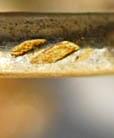



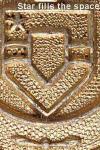
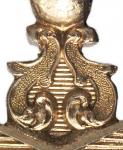

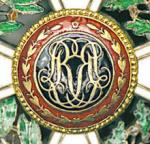
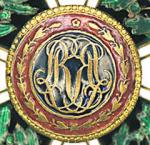
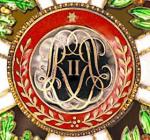
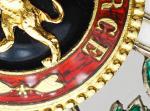
belgian Order of Leopold l
in Northern European & Baltic States
Posted
Thank you all,
I'll see what can be done about posting individual items but I am heading back to work tomorrow so my time will be limited. Many of my Orders have never been posted or featured in mainstream publications (not to my knowledge anyway). I am a little apprehensive about some of them (like the Grand Cross star and commander's cross in cloth/bullion - I know of only one other in museum in Brussels).
Elvis - I certainly wish these were priced as 'candy'. Some of those were quite expensive - often limiting my spending to one item per year. Certainly, I am not alone in that regard.
Some of here members collections are incredible - I was checking those in the Collection section the other night.